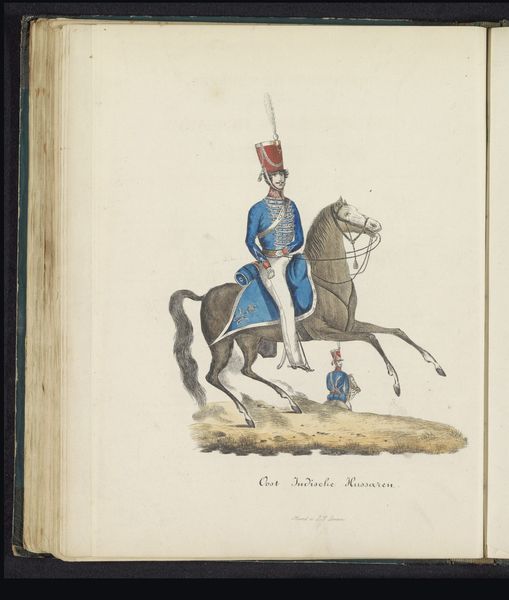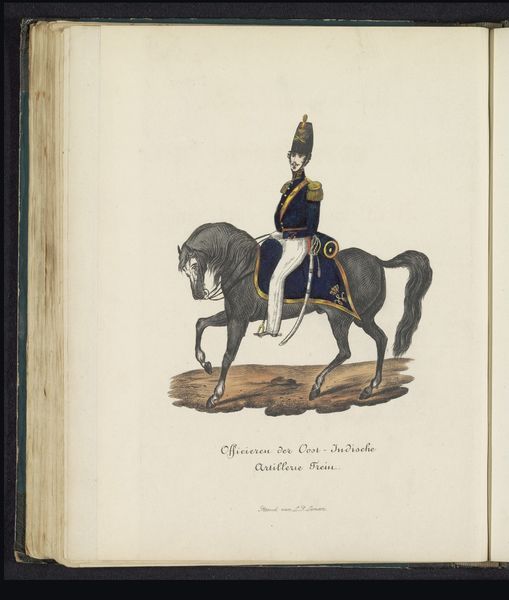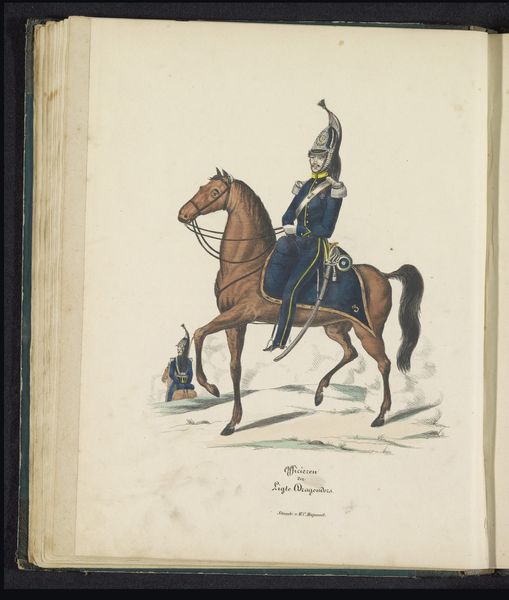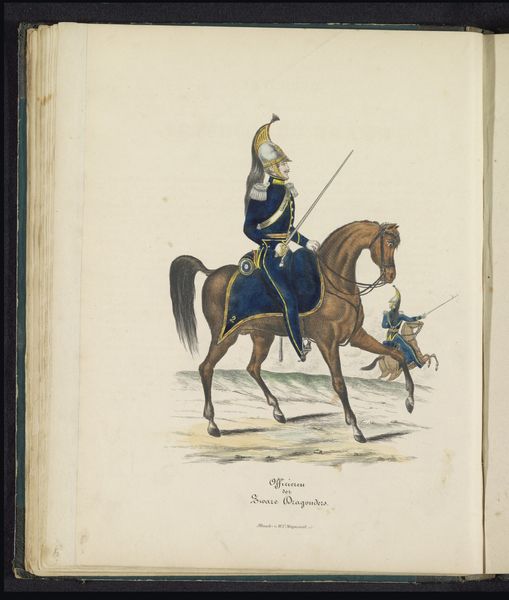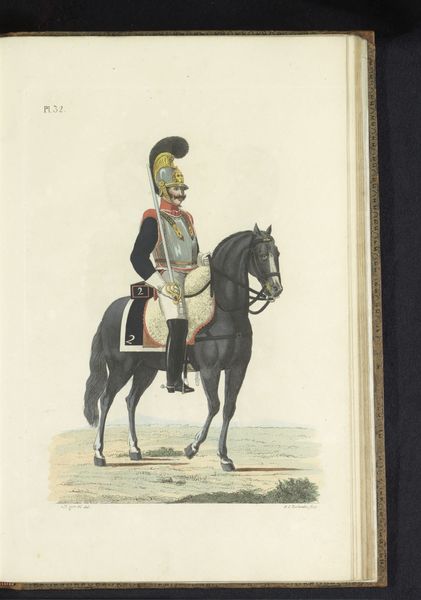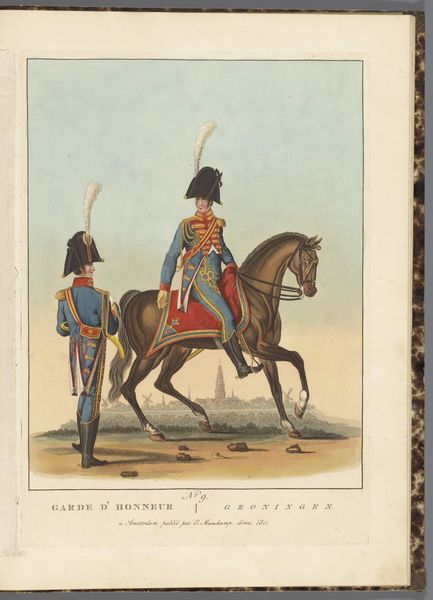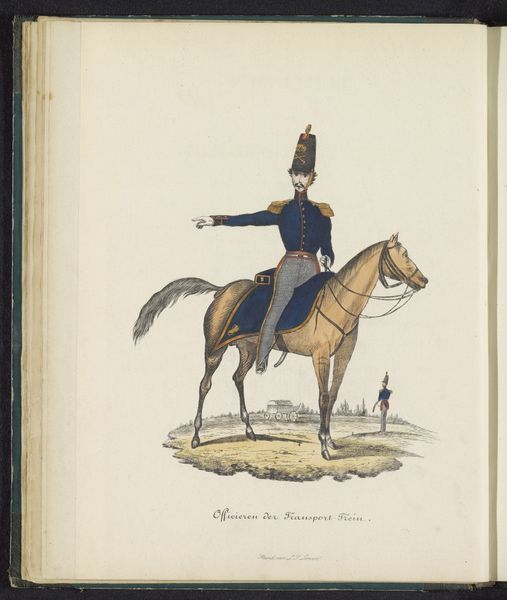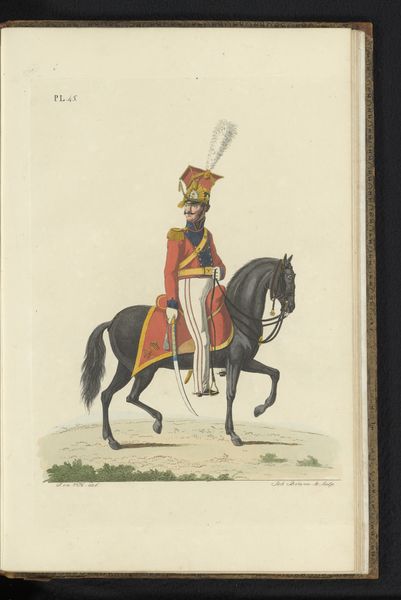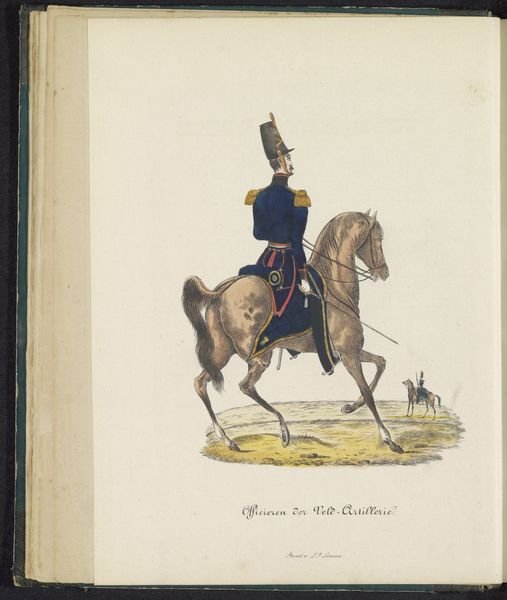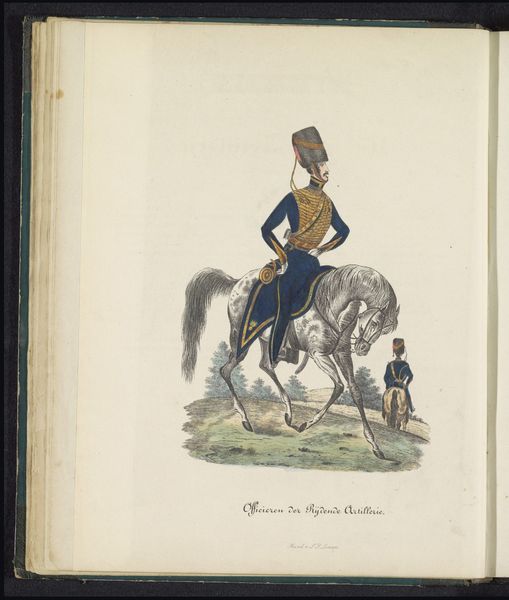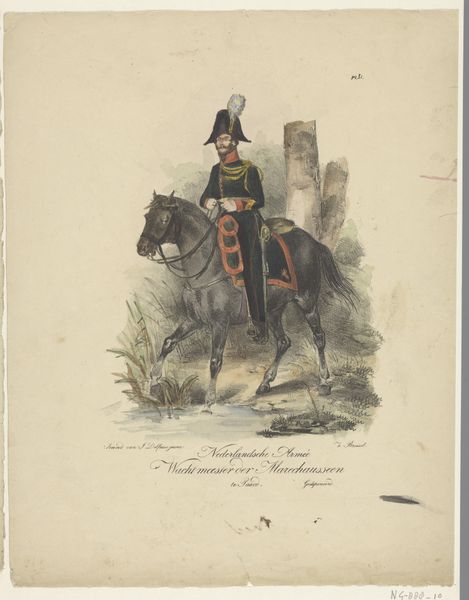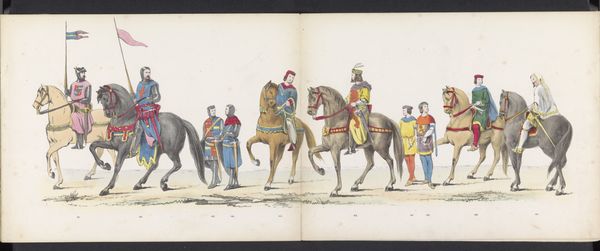
Uniform van de officieren van de Bengaalse lansiers van de Oost-Indische troepen, 1845 1845
0:00
0:00
drawing, watercolor
#
drawing
#
watercolor
#
romanticism
#
orientalism
#
watercolour illustration
#
genre-painting
#
history-painting
#
academic-art
Dimensions: height 270 mm, width 200 mm
Copyright: Rijks Museum: Open Domain
Curator: So, here we have a watercolour drawing by Louis Salomon Leman titled "Uniform van de officieren van de Bengaalse lansiers van de Oost-Indische troepen, 1845," dating back to 1845. Editor: Immediately, it’s the intense formality, the crisp rendering—the guy seems rather aloof and self-important sitting up there. A world of social hierarchy on display, really. Curator: Absolutely. Leman has meticulously captured the details of the officer's uniform, right down to the plume on his hat. It's more than just a portrait, isn’t it? It’s documentation, representing the intricate visual language of power within the East India Company. The medium here is also key, watercolour allowed for a detailed precision that reinforces the subject's control and dominance. Editor: And the East India Company certainly knew how to project power. It's funny though, for something depicting a serious military officer, there’s almost a precious quality about the execution, don’t you think? The colors are quite soft. I almost want to call it romantic! Curator: Well, there's a clear hint of Romanticism in the way the "Orient" is being portrayed here, a common trope of that era and, you might also observe the work draws upon some themes that link with what we call ‘Orientalism’. What's crucial to consider is the historical context: how these uniforms were produced, the socio-economic dynamics at play and who profited, who was used. These materials spoke of status and privilege but through the cost of colonial exploitation. Editor: You are right. When I see the precision, and try to look past the slightly pretty quality of this piece, I feel it is speaking volumes about the military machine that underpinned that power. The control that the company officers held is implicit within the sharpness of this representation. The human impact is hidden under that red tunic and that makes me uneasy. Curator: Indeed, it provokes us to examine both its aesthetic merits and its intricate relationships with the wider history and labor frameworks involved in constructing empires through material objects. Editor: It certainly does. A powerful, if disquieting piece – beautiful and yet... deeply problematic, when one looks closely.
Comments
No comments
Be the first to comment and join the conversation on the ultimate creative platform.
